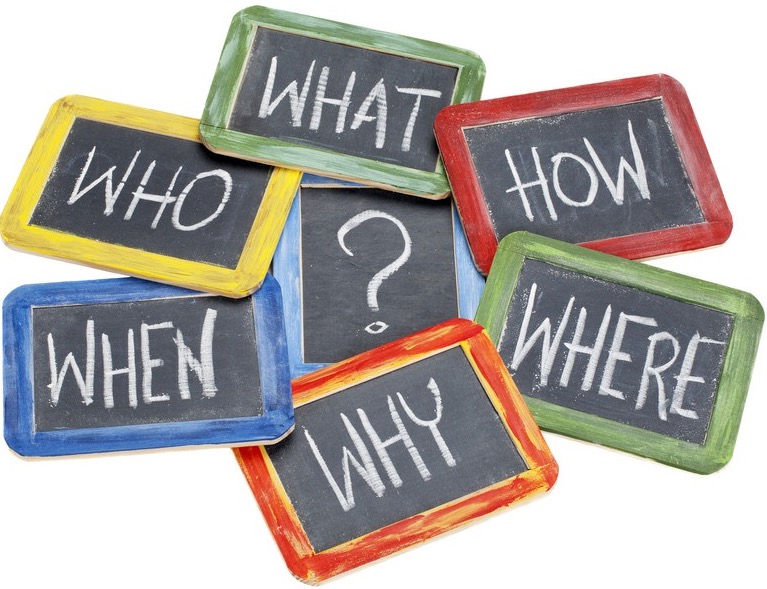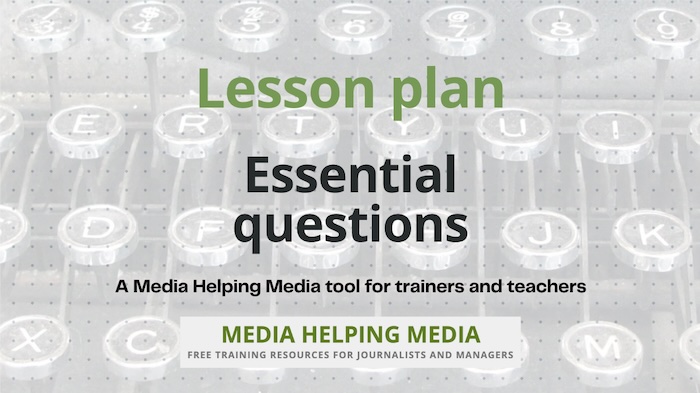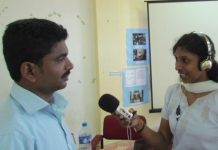 In this lesson we look at the questions a journalists should consider asking.
In this lesson we look at the questions a journalists should consider asking.
The six questions are What? Why? When? How? Where? and Who?
And it’s worth asking yourself these questions to ensure you have not missed out anything which ought to be included in your story.
You don’t have to answer all six questions.
There might be times when you choose leave out one or more of them. That’s fine, as long as you have made a conscious decision to do so.
But use the six as a checklist. Run through them as a matter of routine to assure yourself that you have not omitted anything by mistake.
What – happened?
Why – did the event to take place (the cause)?
When – did it happen?
How – did it happen?
Where – did it take place? and
Who – are the people involved?
Usually, the two most important questions are who? and what?.
News is often about people doing things (or sometimes not doing things) so the who and the what are frequently the most crucial parts of your story.
How much other detail you include is down to your news judgement and the time and space available to you.
But never try to answer all six questions in your opening sentence or paragraph.
It will result in a cluttered report and leave you with little else to write about.
Try this example.
“A climate change protester, John Smith, today drove the wrong way down the M6 motorway in Birmingham in a protest against the building of a new runway at Heathrow airport.”
All six questions have been mentioned, but the sentence isn’t elegant or interesting.
Ration your information. Use it sparingly and to good effect. Try to keep your audience interested.
In this case, the what is more interesting than the identity of the who, so something like this would have more impact:
“A climate change protester caused mayhem today by deliberately driving the wrong way down a motorway.”
There are lots of other ways of writing this story, but however you choose to start, the other details can be incorporated into the next two or three sentences.
By John Allen
Analysis
Let’s delve deeper into the six questions – What, Why, When, How, Where, and Who – and explore their significance in crafting compelling narratives.
While presented as a simple checklist, mastering these questions involves nuanced judgement and strategic deployment.
The foundation: A structured approach to inquiry
The six questions provide a framework for thorough reporting. They encourage journalists to move beyond surface-level observations and seek a comprehensive understanding of the event or issue at hand.
This systematic approach helps ensure that no crucial element is overlooked, leading to more informative and impactful stories.
Think of it as a mental scaffolding that supports the construction of a robust narrative.
Beyond the checklist: Strategic omission and prioritisation
The text rightly points out that answering all six questions isn’t always necessary, and sometimes, strategically omitting one or more can enhance the narrative.
This isn’t about laziness; it’s about journalistic discretion. Perhaps the “when” is less relevant than the “why,” or maybe the “where” is already widely understood.
The important factor is conscious omission, a deliberate choice to prioritise certain aspects of the story over others.
This decision should be guided by news judgement, considering what information is most crucial for the audience’s understanding and engagement.
The interplay of questions: Unveiling the narrative
The suggestion that “who” and “what” are often the most important is a good starting point, but the relative importance of each question can shift depending on the story.
Sometimes, the “how” is the most compelling element, particularly in investigative journalism or stories involving complex processes.
The “why” is almost always crucial, as it provides context and helps the audience understand the motivations and underlying forces at play.
A story without a “why” risks being superficial and lacking depth.
The art of revelation: Structuring for impact
The example of the climate change protest highlights the importance of pacing and strategic information release.
Trying to cram all six questions into the opening sentence creates a cluttered lead.
Instead, journalists should employ a “pyramid” structure, starting with the most compelling lead and gradually revealing more details.
This approach allows for a more natural flow of information and keeps the audience engaged.
The lead: Capturing the reader
The example demonstrates how prioritising the “what” – the act of driving the wrong way down the motorway – creates a more immediate and dramatic lead than focusing on the “who” – John Smith.
The lead’s primary function is to grab the reader’s attention and make them want to continue reading.
This often involves highlighting the most unusual, surprising, or impactful aspect of the story.
Beyond the opening: Developing the narrative
After the initial lead, the journalist can then weave in the other details – the “who,” “why,” “when,” “where,” and “how” – in a way that builds upon the initial intrigue.
This might involve providing background information, exploring the motivations of the individuals involved, or explaining the broader context of the event.
The importance of context: Adding depth and meaning
Consider the climate change protest example. Simply reporting that someone drove the wrong way down the motorway is sensationalist but lacks context.
By explaining that the act was a protest against a new runway at Heathrow, the story gains depth and becomes more meaningful.
The “why” provides a crucial layer of understanding, transforming a seemingly random act into a deliberate expression of a particular viewpoint.
The evolving nature of news: Adapting to the medium
While the six questions remain a cornerstone of journalistic practice, their application can vary depending on the medium.
In a short news bulletin, brevity might be paramount, requiring the journalist to prioritise the most essential information.
In a longer feature article, there’s more space to explore the nuances of each question and provide a more comprehensive account.
Online journalism allows for the incorporation of multimedia elements, such as videos and interactive maps, which can enhance the storytelling and provide additional context.
In conclusion
The six questions are more than just a checklist; they are a tool for critical thinking and effective communication.
Mastering these questions requires not only understanding their individual meanings but also recognising their interconnectedness and strategically deploying them to create compelling and informative narratives.
It’s about understanding the audience, prioritising information, and crafting a story that resonates and leaves a lasting impact.

Questions
- What are the six questions a journalist should consider when crafting a story?
- Why is it important for journalists to use the six questions as a checklist?
- Which two questions are often considered the most crucial in news stories, and why?
- How can a journalist decide which details to include in a news story?
- What is the potential downside of trying to answer all six questions in the opening sentence of a news report?
- In the example provided, why is the “what” considered more interesting than the “who”?
- How does the example illustrate the importance of rationing information in a news story?
- What role does news judgement play in determining the amount of detail included in a story?
- How can a journalist maintain audience interest while providing necessary information?
- In what ways can the details of a story be incorporated after the opening sentence to enhance the narrative?
Answers
- The six questions are What? Why? When? How? Where? and Who?
- Using the six questions as a checklist ensures that no important information is omitted from the story.
- The two most crucial questions are “who?” and “what?” because news is often about people doing things, making these elements central to the story.
- A journalist can decide which details to include based on their news judgement and the time and space available.
- Trying to answer all six questions in the opening sentence can lead to a cluttered report and leave little else to write about.
- The “what” is considered more interesting because it involves an unusual action that captures attention, whereas the “who” is less significant in this context.
- The example shows that by focusing on the most compelling aspects first, a journalist can create a more engaging and effective story.
- News judgement helps determine which details are most relevant and how much information should be included to convey the story effectively.
- A journalist can maintain audience interest by using information sparingly and strategically, ensuring the story remains engaging.
- Details can be incorporated in subsequent sentences to build the narrative and provide a fuller picture without overwhelming the reader initially.
Lesson plan for trainers
If you are a trainer of journalists we have a free lesson plan: ‘The questions every journalist should ask‘ which you are welcome to download and adapt for your own purposes.
In the next lesson we look at story construction.
The image at the top is licensed through Can Stock Photo Inc / PixelsAway in accordance with the End User License Agreement (c) – License # 1397576 and released under Creative Commons BY-NC-SA 4.0.









